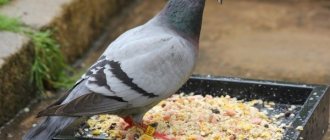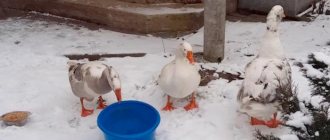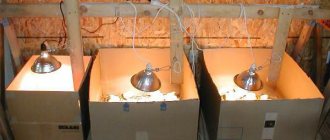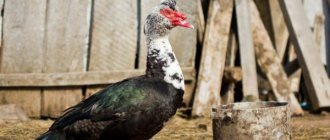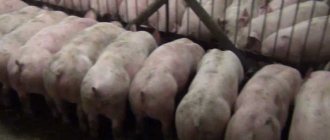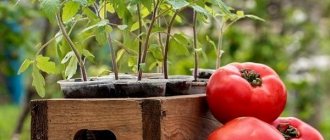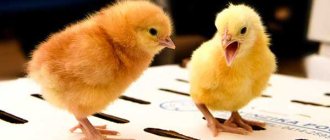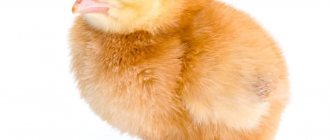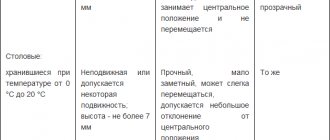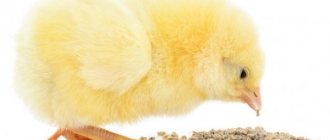Let's figure out what to feed pigeon chicks at home. Conscientious parents, of course, take care of the hatched baby themselves. But there are also emergency situations. For example, having found a baby pigeon on the street, a savior begins to feed it like an adult bird, making a serious mistake that can lead to death. This article will tell you what diet babies need depending on their age and how to give them food.
Why do chicks require special nutrition?
Chicks that remain with one parent from the first days of their life most often die from lack of food on the 9th day. If two parents are lost at once, the entire brood dies on the first day. This is due to several reasons:
- In the first week of life, the chicks feed on their mother’s bird “milk” - a semi-liquid porridge-like mass. The curdled secretion of the female is produced by the glands of the crop. Pigeon “milk” is so nutritious that after just 2 days the weight of the chick doubles. It is impossible to make identical “bird milk” yourself, so it is quite difficult for a chick to survive without its parents.
- Baby pigeons are born helpless, blind, bald, so they are completely dependent on their parents, and in their absence, on humans. Their head is disproportionately large in relation to their body, so they also cannot stand on their paws. At the same time, their beak is huge and constantly open - the chicks have an excellent appetite and require a lot of food. However, the strongest pigeons who can adapt to the new food manage to survive.
A person can come to the aid of babies in a timely manner and feed them, but even in this case, their mortality in the first week of birth is very high.
Birth
Pigeons begin to breed in the spring. By this time, the bird breeder prepares special mating cages and nests for laying. Chicks hatch on average 19 days. The pigeons hatch helpless and weak.
- Newborns cannot see anything.
- The chicks have no hearing.
- They have almost no fluff on their body.
- They hatch with a large open beak.
- The head of the chicks is impressive in size; because of it, they cannot stand on their paws.
- They scream loudly and shrilly when they are hungry or uncomfortable.
- They weigh 10-15 grams.
We suggest you read: What to feed a German Shepherd - About a Friend
The first action of pigeons after the chick has hatched is heating. The shells are removed from the nest immediately after birth. The male and female begin to secrete goiter jelly, which they feed their offspring.
It is important to ensure that the chicks are fed during the first day of their life, otherwise hunger will lead to the death of the pigeons. The breeder must ensure that the first portion of food reaches one chick in the first three hours of its life.
The second chick receives food 12-16 hours after birth, since the first crop milk is only enough for one serving. This factor negatively affects the second chick, since feeding occurs at a critical time for its life. The baby pigeon that was fed first grows stronger and more resilient than others.
Posted by krissystanley (@krisstanley) Jul 17, 2021 at 5:35 PDT
- Week one. During the first seven days, the appearance changes; already on the second day the chick weighs several times more than at birth. By the end of the first week, he is covered with fluff, grows and is better oriented in space.
- Week two. The first feathers grow, eyes open and hearing improves. The beak becomes comparable in size to an adult bird.
- From the third week, the process of active plumage begins. The chicks see and hear well and move actively.
- At one month, the bird's body is completely covered with feathers. The young pigeon can fly, walk and feed itself.
Diet for the first week
In order for the chick to survive the first week of its life without its parents, it will need to be fed foods similar in composition and calorie content to pigeon milk. How is the very first “baby food” of pigeons formed? This happens as follows:
- The regurgitated porridge, which consists of crushed grains, passes from the female’s stomach into the crop. There it is mixed with a secretion - a milky liquid.
- Thick porridge from grains becomes liquid and digestible, that is, the effect of pigeon “milk” is similar to the effect of the saliva of a person or any mammal.
- After 4 days, highly softened grains the size of a hemp seed and a small amount of sand particles already enter the parent’s crop. This is the natural “baby food” of the chicks.
It is impossible for a person to create the same food, so we have to look for the closest possible analogues. The best options for replacing it are:
- Chicken yolk . Ideal food for a newborn chick as it has a balanced concentration of nutrients. It is served warmed up.
- Combined or starting composition for feeding chicks . The dry mixture must be steamed with boiling water and diluted to the desired consistency - a mushy mass. It can also be given warm. This is an acceptable food option, but is inferior in nutritional value and calorie content to chicken yolk.
Some pigeon breeders use baby formulas to feed chicks, but experts categorically prohibit feeding them to the younger generation, since they are not suitable for them either in terms of substances or structure.
Chicks should be fed yolk or a diluted mixture at least 6 times a day, since their metabolic rate is very high. The difficulty is that in the first week the chicks cannot feed themselves - in nature, the female regurgitates food directly into the baby’s beak. It is better for a person to use disposable syringes with a volume of 10-20 cubic meters to feed pigeons. cm or pipettes, proceeding as follows:
- Draw food into a syringe (pipette).
- Place a pacifier on the tip of the instrument.
- Insert the pacifier into the baby pigeon's beak and gently squeeze out the required portion of food.
The person needs to pay special attention to inserting the pacifier into the beak. This is a rather complex process in which you cannot act forcefully, since you can easily injure the beak. What to do? You can use a little trick - before feeding, touch the chick's head several times with your finger. This will be enough for him to raise his beak and open it.
The fact is that this is a natural reaction of all pigeons: at first they are deprived of sight and hearing, so the parents give them a signal that they are ready to feed. They lightly tap their beaks on their heads, and the chicks open their beaks. A similar ritual can be performed by a person.
If the chick is force-fed, you need to grab it by the head with one hand and open its beak with two fingers, and gradually introduce food with the other hand. The process of force-feeding a chick is demonstrated in the video:
If you choose the right food and act carefully, newborn chicks will not die, but will be able to survive the first 18-20 hours. After this, they must be taught to feed on their own, otherwise they will gain weight poorly and lag behind in development. So that they can eat without human help, you need to put a rubber nipple on the syringe and make a cut at an angle of 45°. The hole should be of such a size that the chick can stick its beak inside and start eating on its own.
What to do if a pigeon chick falls out of the nest
If a pigeon chick has fallen out of the nest, it is recommended to look around to see if its parents are nearby and are afraid to fly up to it because of the presence of people. If there are no adults nearby, then it is worth visually inspecting the pigeon chick itself. If there is plumage, it is completely dry, it behaves quite actively and is warm to the touch, then such a bird does not need help. Most likely this is his first flyby.
If the found pigeon chick does not fit this description and it is clear that without human help it will die, then you should carefully pick it up without damaging the bones. Take it home to a warm place and begin the feeding process.
Diet for the second week
From the second week, mortality among chicks drops significantly. Baby pigeons open their eyes on the eighth day, their hearing becomes better, and plumage appears. It is necessary to continue to feed them properly so that they gain weight and develop faster. In addition, from the second week they begin to prepare the chicks for “adult” food.
Starting from 9-10 days, the female stops feeding the babies with mushy mass from the stomach. Now their diet includes softened grain from the mother's crop and a large amount of water. Gradually, parents spend less time swelling the grains in the crop. Throughout this time, the activity of the glands does not stop, but gradually it decreases, so the amount of synthesized “milk” decreases.
Artificial chicks are introduced to cereals:
- barley;
- peas;
- millet;
- wheat;
- vetch;
- millet.
The food is prepared as follows:
- Grind the grains in a coffee grinder to flour. The finer the grind, the better.
- Steam the flour with boiling water and leave for 5-8 minutes.
- Add a small amount of honey to the grain mass to increase the chick's immunity and mix.
- Enrich the food with minerals, in particular calcium, for active growth of the chick. To do this, add dry crushed shells, chalk or a small amount of red clay to the porridge. It is not worth buying chalk bars from office supplies - the amount of calcium in them is much less than in chalk sold in specialized pet stores.
You need to fill the syringe with the resulting composition and feed the chick. The number of meals remains 6. The chicks must be fed until the crop is completely filled.
In order for the chicks to quickly get used to humans, they should be fed in the same clothes. In addition, you should not make loud and sharp sounds or pops, since the chicks should not experience anxiety and fear before feeding. You can talk to them in a quiet and even voice.
By the end of the second week, the chicks can be fed a little bit of whole grain as food.
Time of appearance of chicks in adult pigeons
Most pigeons live in their nests, which they build in places far from people. The construction is mainly done by the female, while the male helps in searching for materials and brings twigs in his beak. After construction, the pigeon family lives in one nest for many years, transforming and expanding it every year.
Pigeons are wonderful parents
Pigeons breed in the warm season, most often from the fourth to ninth months of the year. A female can lay a maximum of one or two eggs. Both parents then take turns incubating the eggs for approximately 2.5-3 weeks. The chicks appear absolutely weak and helpless, as we said earlier, they do not have the slightest ability to take care of themselves. Chicks hatched in cold weather are at great risk, as they most likely will not be able to withstand the cold.
You can read more about how pigeons reproduce in our special article.
The only way to survive is the care of their parents, who warm them with their bodies. Each parent takes turns caring for the chicks in the nest while the other tries to get food for itself. That is why pigeons are a symbol of love - they form good married couples, are faithful throughout their lives, raise offspring together and take care of the chicks.
Diet for the third week
With proper feeding, by the third week the pigeons become stronger and more active. Now they are fed on demand - they make quite loud squeaking sounds, so it is impossible to miss the time of the next meal.
Three-week-old chicks need to be introduced to the menu:
- Finely chopped greens . It is a source of minerals and vital substances for a growing organism. Feed the chick grass in the same way as grain, that is, manually place it in the open beak.
- Whole grains . They must first be steamed - kept in hot water for 5-10 minutes. If, after steaming, the grains greatly increase in size, they should be cut into two parts and fed to the chicks in halves. When dry, the grains can get stuck in the chicks' throats. Place no more than 2-3 steamed grains into the beak. If the chick's crop is complete, stop feeding. During this period, you should not expect the baby to feed himself from your hands, so you will have to manually open his beak and put food inside.
In the third week, the number of meals should be reduced to 4 times a day.
Give drinks only after meals. It should be warm. Give water to the chick like this: pour water into a shallow plate and lower its beak into it, making sure that the water does not get into the nasal openings. The first attempts will be unsuccessful, since he will not be able to immediately understand what they want from him, but you should not give up. Soon the little pigeon will understand that there is water here, which it needs.
What do we know about pigeons: appearance and features
Thinking about the appearance of the chicks, it is difficult to say anything other than that they are small, poorly feathered, absolutely weak, but with a huge open beak. Chicks appear in the most ordinary way, like any other birds - they hatch from eggs.
Newborn pigeons are unable to hear or see, since they lack hearing and vision for the first few days. There is also no down or feathers on their body at all. To understand that this is a pigeon chick in front of you, it will take a lot of effort, since it is quite difficult to distinguish it from other birds and only an experienced professional ornithologist can cope with this.
Photo of a newborn baby
Why they look this way is difficult to say. However, it is small size, blindness and deafness that save newborn pigeons’ lives. In the first few days, the chicks look rather inconspicuous and behave quietly, so they do not particularly attract the attention of predators.
As already mentioned, pigeons are born with a very large beak, but a small head and an even smaller body. It is because of this that pigeons cannot get up for some time. Although they do not weigh much - about ten grams. But even this weight cannot be supported by their small legs, which are still very weak. The same cannot be said about the beak of pigeons: it begins to grow in them already from birth, and after just a week and a half it becomes huge and strong.
Also, baby pigeons have very large, bulging eyes. However, they are still covered with some kind of film, which is why the chicks do not see anything in the first days. The only thing they have enough strength for is a subtle squeak. If the baby pigeons feel cool when they accidentally roll out from under their father or mother, they try to crawl under them on their own.
Growing pigeons in the nest
Table No. 1. Weight of a pigeon chick.
| Age of the chick, in days | Chick weight, in grams |
| 0 | 10 |
| 6 | 100 |
| 12 | 200 |
| 18 | 300 |
| 24 | 350 |
| 30 | 370 |
Several chicks hatched at the same time usually behave quietly, especially if they do not feel hungry. They press against each other, which allows them to retain heat.
Week old chicks
On the fifth or sixth day, the pigeons’ eyes open and they begin to distinguish sounds. At this age, small tubes appear on the body, which will later develop into thick feathers. After a week, the chicks try to stand on their own legs, but it is still too early for them to fly. Only on the twentieth day dove chicks become covered with feathers and begin to prepare for their first flight. By the end of a month of their life, they can already fly well.
Feeding month-old pigeons
A one-month-old chick's diet changes completely. The main menu consists of the following products:
- boiled chicken egg, finely chopped;
- boiled carrots, finely chopped;
- white bread, soaked in water and rolled into small balls.
New food still needs to be placed into the chick's beak by hand. To maintain immunity, it is recommended to add fish oil to it, but not more than 2 times a day.
The menu should also include the following products:
- a variety of domestic vegetables and fruits, but different types cannot be mixed, that is, only one finely chopped fruit or vegetable can be given at one feeding;
- millet porridge, cooked in water without adding salt, oil and other ingredients, small lentils and field beans (such food must be present in the diet of short-beaked pigeons).
It is prohibited to give raw millet to chicks.
When the chick begins to learn to fly, its menu will also need to be adjusted, reducing the amount of wheat, but increasing the content of legumes - vetch and peas.
Particular attention should be paid to drinking. At this point, the birds consume clean water in large quantities, so they must always have free access to it, otherwise its lack will negatively affect the digestion of the chicks. There is no need to boil water, since at high temperatures not only pathogenic microorganisms die, but also beneficial ones. The drinking bowl must be washed regularly and the water changed.
By the end of the first month, the chick should fully learn to feed and drink independently. Only in this case can it be released into the common dovecote.
Cleaning and disinfection rules
In order to avoid infectious diseases in chicks, their habitat must be carefully and regularly looked after.
- The drinking bowl and feeding vessel are cleaned twice a day. The water should always be clean. For washing, you can use a soap solution; it is important that the soap does not sag on the dishes.
- The premises are disinfected once a week. The pigeons are temporarily moved to another place, and the bedding from the box is completely removed. Wash everything possible with a soapy solution and plenty of water. For this I also use solutions of potassium permanganate, caustic soda (1%), bleach (1%), chloramine (1%), paraform (2%), ecocide, virocide, formaldehyde and others. After treating the room and equipment, you need to additionally rinse everything with clean boiled water and ventilate the room. The litter is changed to clean.
We suggest you read: What can you feed quails besides feed?
To prepare a soap solution, you need to dissolve half a kilogram of soap in 10 liters of water. Preparations sold in finished form have instructions according to which the solution is prepared.
Other animals, birds and even insects should not enter the room where pigeons are kept.
Feeding pigeons older than one month
As soon as the chicks are 1 month old, they are transferred completely to “adult” food, but this is done gradually, stretching the transition over a whole week. The diet is adjusted as follows:
- reduce the share of bread and eggs;
- increase the number of grain crops.
The most useful for them will be:
- ground peas;
- corn;
- wheat;
- sunflower seeds.
Green salads, chopped on a medium grater, should also be present in the daily diet. They are made from the following green crops:
- sorrel;
- clover;
- dandelion;
- cabbage and lettuce leaves;
- spinach;
- alfalfa.
You can add grated carrots, sprouts of sprouted oats and barley to them. The sprouted grain itself should not enter the bird’s body. Salads cannot be salted, but you can add a drop of unrefined sunflower oil.
Important points about keeping and feeding birds
The chances of survival of the chicks will greatly increase if the person involved in feeding takes into account the following tips:
- Little pigeons are susceptible to cold, dampness and drafts, which can be detrimental to them.
- The chicks should be fed according to the rules, without deviations. To ensure that pigeons receive vitamin E, you can give 1-2 drops of fish oil.
- A fed chick can be released to adult birds only if the pigeon eats and drinks on its own.
- It is better to feed the chicks in the same clothes so that the babies get used to it and recognize the owner. Do not make noise or make loud noises while feeding.
- If the bird is very weak, then instead of water, it is soldered with a glucose solution.
Pigeon chicks left without parents will not survive without human intervention, so you should give the kids a helping hand. By following the tips and recommendations, you can feed even very weakened birds, watching how a beautiful and well-fed pigeon grows from a tiny lump.
Vitamins and minerals
For normal development and growth, pigeons need a sufficient amount of vitamins and minerals. Egg shells are good for replenishing mineral reserves. To reduce the risk of developing rickets, you can also add bone meal, crushed chalk or shell rock to the food.
It is better to add vitamins to the water starting from the 15th day after the chicks are born. They need the following vitamins:
- A (retinol);
- group B – B1 (thiamine), B2 (riboflavin), B3 (nicotinic acid), B5 (pantothenic acid), B6 (pyridoxine), B9 (folic acid), B12 (cobalamin);
- D (calciferol);
- E (tocopherol).
However, it is worth observing the dosage of vitamins, since their excess will provoke hypovitaminosis, against the background of which the development of the chicks may slow down and the functioning of the immune system may deteriorate.
To avoid overdose, it is better to purchase multivitamin supplements at pet stores. They already contain all the necessary substances in the required concentration.
Baby Feeding Tools
In the first week of life, the chicks are very weak and heavily dependent on parental care. Under natural conditions, the main food product is goiter milk, regurgitated by parents directly into the baby’s beak.
If the little chick is left unattended during this period, it may freeze and die of hunger within one day. A huge problem is that the chicks in the first days after hatching from the eggs do not yet know how to eat on their own and this procedure must be carried out by force. You can, of course, try to push food into the mouth by opening the tightly closed beak, but there is a high risk of causing serious injury.
What should you not feed?
Fruits and vegetables are beneficial for a growing chick's body, but not all of them are allowed. Thus, the ban applies to the following crops:
- potato;
- tomatoes;
- avocado;
- citrus;
- papaya;
- mango.
It is also prohibited to give:
- salt and salty foods;
- milk and dairy products (cause dysbiosis - a condition associated with a violation of the intestinal microflora);
- fish, meat and meat products, since this is very heavy food for chicks, which they cannot digest (their consumption can cause the death of pigeons);
- rye and rye bread, as they cause severe fermentation in the digestive tract, which leads to bloating and diarrhea;
- sunflower seeds in large quantities (their peel can get stuck in the crop and injure it, and they also negatively affect the liver).
Caring for chicks
In order for the chicks to get used to humans, it is important to communicate with them, pick them up and carefully examine them regularly. From the moment they begin to see, it is better to go to them in the same type and same-color clothes. This is how they get used to the appearance and voice of the owner.
The most important stage of taming is feeding the chicks, in particular from the hands. The main thing is to create an atmosphere of warmth and safety for the pigeon. Do not make noise in front of them or make sharp loud sounds. Caring for a chick necessarily includes a systematic, almost daily examination for diseases.
A healthy bird has:
- good development, appropriate for age and dense physique;
- even pupils;
- oval entrance to the throat, free breathing;
- clean mucous membranes are pinkish in color;
- uniform plumage;
- healthy appetite, regular food intake;
- soft stool, no mucus, not liquid.
In the absence of at least one of the signs, it is worth carefully monitoring the condition of the bird, as they are susceptible to many diseases.
Posted by Chitresh Mishra (@chitreshmishra) Nov 13, 2021 at 7:12 PST
